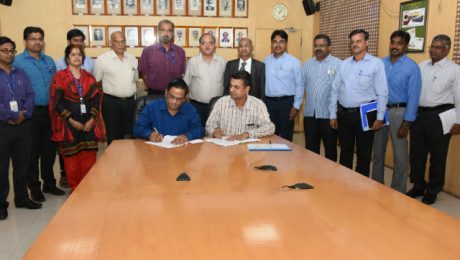SRM inks pact on hydrogen-powered train development
Date: 25th February 2018
VIJAYAWADA: SRM Institute of Science and Technology (SRMIST), Chennai, SRM University – AP, Amaravati and the Integral Coach Factory (ICF) of Indian Railways have signed a MoU in Chennai on Saturday to jointly develop a fuel cell-based train prototype.
- Published in News
SRM University and ICF sign MoU to Develop India’s First Hydrogen Fuel Cell Train
Prof. D Narayana Rao, Pro Vice Chancellor, SRM University AP Amaravati and B Chandrasekhar, Deputy Chief Mechanical Engineer, Indian Railways’ Integral Coach Factory, Chennai has signed a memorandum of understanding to develop fuel cell based train prototype.
While ICF will manufacture this train, SRM will provide the energy storage systems such as fuel cells, batteries, super capacitors, DC/DC converters and control systems up to DC link.
- Published in News
SRM Amravati will be a multi-disciplinary university – Dr. P.Sathyanarayanan, President SRM University
Date: 27th February 2018
Starting with one School in 1969, SRM University has rapidly expanded its Schools in the fields of Engineering, Medicine and Health Sciences, Science and Humanities, Management, and Law. In 2006, the institute was granted the status of a full-fledged university and has since been known as SRM University. By 2015, the university spread its wings in three different regions by setting up three separate Universities namely SRM University Chennai, SRM University Haryana and SRM University Sikkim. The latest in the group is SRM University, AP – Amaravati, which started operations with three programs in engineering.
- Published in News
Fostering a novel culture of learning
Date: 6, March 2018
SRM University is envisaged to be a multi-disciplinary institution starting off with programmes in engineering, followed by liberal arts, management, law, medical sciences and pure sciences. P Sathyanarayanan, president of SRM University and a young entrepreneur, lives by the motto “Think big, do big, achieve big”. He has been pivotal in advancing studies, research and internationalisation of the university.


